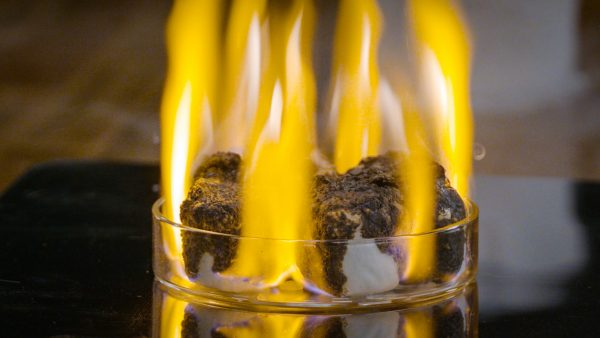Chloroplast Definition
A chloroplast is an organelle in plants, containing chlorophyll for photosynthesis. For example, it converts carbon dioxide and water into sugar and oxygen.
View Lesson on Photosynthesis & Respiration
Become a member to get full access to our entire library of learning videos, reading material, quiz games, simple DIY activities & more.
Become a member to get full access to our entire library of learning videos, quiz games, & more.
Plans & Pricingto watch this full video.

Access All Videos
and Lessons, No Limits.
Access All Videos

No credit card required,
takes 7 sec to signup.
No card required

Ready-to-go lessons
that save you time.
Ready-to-go lessons
If you are on a school computer or network, ask your tech person to whitelist these URLs:
*.wistia.com, fast.wistia.com, fast.wistia.net, embedwistia-a.akamaihd.net
Sometimes a simple refresh solves this issue. If you need further help, contact us.
Photosynthesis & Respiration
Fun Facts
- Seaweeds and other algae are part of the kingdom Protista, contain chloroplasts, and are able to photosynthesize.
- Chloroplasts contain green chlorophyll molecules to absorb sunlight.
- Oxygen gas bubbles are produced by chloroplasts during photosynthesis.
Why Do We Need To Know About Chloroplast
Learning about chloroplasts helps us understand how plants make their food through photosynthesis and how they turn sunlight into energy. This is important for jobs in science, especially in studying how cells work and how we can use that knowledge to improve our lives.
Also, knowing about chloroplasts can help us find better ways to make renewable energy, like solar power and biofuels. This means we can create energy in cleaner, more efficient ways by copying how plants work.
Frequently Asked Questions
Check out the Full Lesson on Photosynthesis & Respiration
In this lesson, we learn that:
- Plants carry out photosynthesis to make sugar from carbon dioxide and water.
- In cellular respiration, living things use sugar to produce energy.
- Matter cycles in an ecosystem through photosynthesis & cellular respiration.
Related Topics
- Adaptation Definition
- Biomimicry Definition
- Biotechnology Definition
- Cast Fossils Definition
- Cell Definition
- Cellular Respiration Definition
- Chloroplast Definition
- Chloroplasts Definition
- Conductor Definition
- Convection Definition
- Distillation Definition
- Electric Field Definition
- Engineering Design Process Definition
- Extinct Definition
- Fertilizer Definition
- Fossil Definition
- Friction Definition
- Gas Definition
- Gas Definition
- Geologic Processes Definition
- Group Behavior Definition
- Landslide Definition
- Latitude Definition
- Limited Resource Definition
- Mass Definition
- Meteorologist Definition
- Muscular System Definition
- Mutation Definition
- Natural Disaster Definition
- Newton’s 1st Law Of Motion Definition
- Non-renewable Resource Definition
- Opaque Definition
- Paleontologist Definition
- Parasitism Definition
- Photosynthesis Definition
- Pollen Definition
- Pollution Definition
- Potential Energy Definition
- Predation Definition
- Predator Definition
- Push Definition
- Season Definition
- Star Definition
- Tectonic Plates Definition
- Thermal Energy Definition
- Thermometer Definition
- Transform Boundary Definition
- Weather Front Definition
Start a Free Trial Today. Get a $5 Amazon Gift Card!
Teachers! Start a free trial & we'll send your gift card within 1 day. Only cards left. Try it now.
Select Grade
Select Subject
This email is associated with a Science Kit subscription. Kit subscriptions are managed on this separate page: Manage Subscription

-
Download InvoiceScience & Math$/yr
-
Download InvoiceScience Only$/yr

access all lessons
• No credit card required •
"My students loved the videos. I started the video subscription in May and used them as a review before the state test, which I know contributed to 100% of my class passing the state test."
Rhonda Fox 4th Grade Teacher, Ocala, Florida
Use Generation Genius in Your School
Access all lessons free for 30 days.
"My students loved the videos. I started the video subscription in May and used them as a review before the state test, which I know contributed to 100% of my class passing the state test."
Rhonda Fox 4th Grade Teacher, Ocala, Florida
• No credit card required •
Already a member? Sign In
* no credit card required *

* no credit card required *
* no credit card required *


to Discover the Benefits of Generation Genius
Learn How to Save for Your School & District!

no credit card required
Skip, I will use a 3 day free trial
Enjoy your free 30 days trial
-
Unlimited access to our full library
of videos & lessons for grades K-5. -
You won’t be billed unless you keep your
account open past your 14-day free trial. -
You can cancel anytime in 1 click on the
manage account page or by emailing us.
-
Unlimited access to our full library of videos & lessons for grades K-5.
-
You won't be billed unless you keep your account open past 14 days.
-
You can cancel anytime in 1-click on the manage account page.
Cancel anytime in 1-click on the manage account page before the trial ends and you won't be charged.
Otherwise you will pay just $10 CAD/month for the service as long as your account is open.
Cancel anytime on the manage account page in 1-click and you won't be charged.
Otherwise you will pay $10 CAD/month for the service as long as your account is open.
We just sent you a confirmation email. Enjoy!
DoneWe use cookies to make your experience with this site better. By using this site you agree to our use of cookies. Click "Decline" to delete and block any non-essential cookies for this site on this specific property, device, and browser. Please read our privacy policy for more information on the cookies we use.Learn More
We use cookies to improve your experience. By using this site, you agree to our use of cookies. Click "Decline" to block non-essential cookies. See our privacy policy for details.Learn More




























































































































